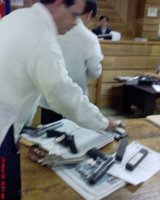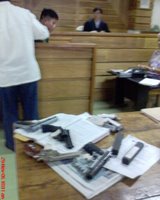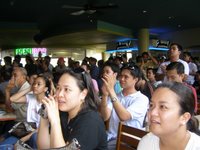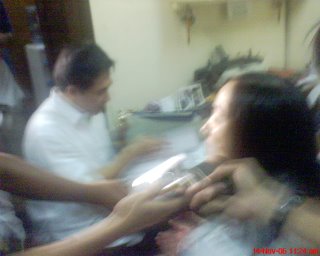 Krispy Kreme, one of the hottest selling doough nuts in the United States opened its first ever branch in the Philippines today at the Fort area in Taguig today.
Krispy Kreme, one of the hottest selling doough nuts in the United States opened its first ever branch in the Philippines today at the Fort area in Taguig today.Krispy Kreme's entry was welcomed warmly by Metro Manila customers as thousands lined up in order to be among the first to taste the different varieties of Krispy Kreme products.
I first got to taste Krispy Kreme in Los Angeles years ago, when it was also a hot item at that time.
The Krispy Kreme store in L.A. designed their store in a way that customers see the process of cooking the dough nuts.
I haven't been to the local Krispy Kreme here but I expect the set up to be the same.
I first heard of the opening through flyers distributed in offices in Makati, in full crisp color.
I do not know when we will be able to visit Krispy Kreme at the Fort, but we will wait until the euphoria subsides.
I remember their dough nuts to be laced with powdery sugar, and it comes in different flavors.
And the endorements were a mouthful.












































